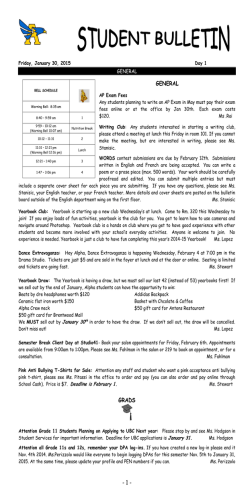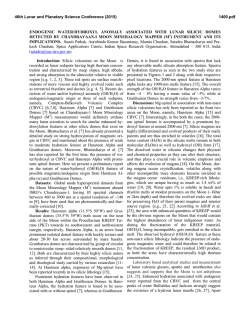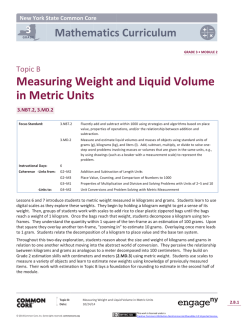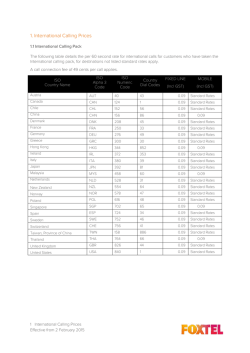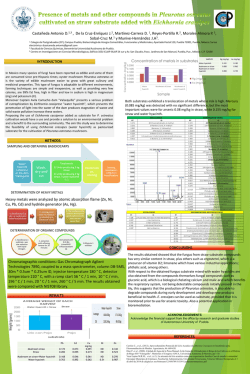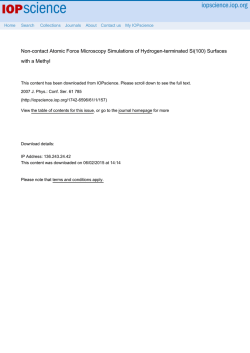
PARASYMPATHICOLYTICALLY ACTIVE ALPHA
United States Patent 0 " ice 1 2,884,436 Patented Apr. 28, 195-9 wherein R isalkyl; their quaternary‘ammonium salts by the formula: 2,884,436 PARASYMPATHICOLYTICALLY ACTIVE ALPHA, ‘ omen»: -‘ ‘ ALPHA - DIPHENYL-GAMlVIA-DIALKYLAMINO BUTYRAMIDE COB/[POUNDS AND MANUFAC ' TURE THEREOF Paul Adriaan Jan Janssen, Turnhout, Belgium, and David wherein R and R’ are alkyl and X is an acidic radical” Karel de Jongh, Haarlem, Netherlands, assignor to A preferred example of the foregoing is alpha,alpha-i N-V. Nederlandsche Combinatie voor Chemische In 10 diphenyl-gamma-diisopropylamino butyramide methio-. dustrie, Amsterdam, Netherlands, a Dutch company dide, whose parasympathicolytic action is‘ at‘ least two No Drawing. Application August 3, 1955 ‘ times that of alpha,alpha-diphenyl-gamma-N-piperidino' ' butyramide, which is the strongest active alpha,alpha-,' Serial No. 526,314 Claims priority, application Netherlands August 28, 1954 2 Claims. (Cl. 260-457) diphenyl-gamma-dialkylamino butyramide described up} 15 till now. Given orally, the toxicity is‘exceedingly low,’ the LB“ (mice) being two to three times as large as for' the known alpha,alpha-diphenyl-gamma-dialkyl-amino This invention relates to certain alpha,alpha-diphenyl¥ , butyramides. The inhibitory action‘it exhibits on hista gamma-dialkylamiuo butyramides and their quaternary min-induced gastric secretion in man is a property which. ammonium-salts which we have found to be highly potent 20 was not described for any known compounds. and highly speci?c parasympathicolytically active com Other examples of preferred alkyl radicals which may pounds. The compounds of this invention are of especial I , be represented by R in the foregoing formulae are methyl " and ethyl. R’ is preferably represented by methyLethyl utility as inhibitors of gastric secretion in man. It is a principal object of this invention to provide and isopropyl. _ 2 parasympathicolytically active. compounds which have the 25 The compounds of this invention may be prepared in: aforesaid utility and which have little or no side e?lects. any suitable manner. However, it has been foundthat. Compounds‘ have heretofore been proposed for the the preferred method of preparing the compounds is by. purposes aforesaid but have drawbacks because of the v many side effects when administered in man. Thus the hydrolysis of the corresponding nitriles. It also has been found that ‘the nitriles are preferably obtained byv known compounds heretofore proposed have exhibited 30 . i ' 35 It is another object of this invention to provide para sympathicolytically active compounds which have the aforesaid utility and are more active and lower in tox- r ' (2) By condensing alpha,a1pha-diphenylacetonitrile for human administration. Moreover, these known com- 1 induced gastric secretion in man. - pha,alpha-diphenyl-gamma-halogen butyronitrile; therapeutically active doses which made them unsuitable pounds never exhibited an inhibitory action on histamin one of the following vprocesses: (1) By, condensing an alkyl isopropyl amineywithvnal-l side effectsv as ‘dizziness and orthostatic hypotension at with an‘ alkyl isopropyl aminoethylhalide. ‘ , With reference to the methods‘ referred to-above, the alkyl groups in the alkyl isopropyl amine or in the alkyl isopropyl aminoethylhalide correspond to those which by . . . . ' virtue of the reactions involved are caused to occur‘ at R icity than the said known compounds. The compounds herein disclosed exhibit a large activity and a very low 40 and R'in the foregoing formulae. toxicity when administered by the oral route in the pre amine. with a1pha,alpha-diphenyl-gamma-halogen .buty~ vention of gastric secretion. rouitrile, this condensation gives low yields if it is carried‘ out by boiling the two components under re?ux withor The parasympathicolytic activity of alpha‘,alpha-di , ‘ . . With regard to the condensation of an alkyl isopropyl‘ phenyl-gamma-dialkylamino butyramides was known 45 without a solvent. It was found that the yields could be; considerably improved by carrying out this reaction in a; (Arch. exp. Pharmakol. u. Pathol. 214, 93 (1951), I. Am.v Med. Ass. 151, 798 (1953), and Gastroenterology 23, closed system under pressure. . f , ' ' 199 (1953)). Kirsner et al. (Gastroenterology 23, 199 The alpha,alpha-diphenyl-gamma-alkylisopropylamino 798 (1953)), found 1 ‘ butyramides can be converted into their quaternary am(1953), and J. Am. Med. Ass. 151, the compounds alpha,alpha-diphenyl-gamma-N-piper 50 monium salts by boiling them under re?ux withan alkyl-' idino butyramide and its methiodide to possess strong halide or another alkyl ester. However, if an alpha,‘ inhibitory action on gastric secretion. However, owing to alpha-diphenyl-gamma-dialkylamino butyramide is con-' side effects these compounds were deemed as unsuitable verted into its quaternary ammonium salt by boiling with an isopropyl ester the yields are low. It was found for therapeutic use. ‘i that these yields could be considerably raised by carrying According to this invention, it has been found that the 55 foregoing objectives and advantages are realized by cer out this ‘quaternisation in a closed vessel under pressure. tain new compounds, i.e., compounds selected from the The hydrolysis of the nitriles is preferably carried out group consisting of alpha,a1pha-diphenyl-gamma-alkyl inthe presence of a mineral acid,’ sulfuric acid normally isopropylamino butyramides and their quaternary am monium salts. The alpha,alpha-diphenyl-gamma-alkylisopropylamino butyramides may be represented by the following formula: giving the best results. 60 ' ‘ The invention will be further explained by reference to the following examples: '" " Example 1' To‘ a suspension of grams of ‘sodiumarnide 100 ml.;of benzene a solution of 33 grams of diphenylacetm nitrile in 80 ml. of benzene was slowly added with stirring, R the temperature of the mixture being 3()°-35° ,Aftet, 2,884,486 4. all ‘of the "diph'enyllacetonitrile had been added themix~ Example 6 ture was heated to boiling and boiled under re?ux for 45 minutes. After cooling, a solution of 28 grams of The procedure of Example 3 was followed, except that instead of diisopropylamine 15.8 grams of methyl is0~ diisopropylaminoethylchloride in 40 ml. of xylene is added dropwise, the temperature of the mixture again being 30°—35° C. When this addition has been completed, propyl amine was used. yield of 89%. obtained in Example 4. the mixture is boiled under re?ux for a period of three hours. “After cooling, washing with‘ water, extraction Example 7 with hydrochloric acid, alkalifying with sodium hydrox ide, extraction with ether, drying and evaporation of The procedure of Example 1 was followed, except that instead of d-iisopropylaminoethylchloride 25.6 grams of ethyl isopropyl ‘aminoethylchloride was used. The nitrile was obtained in a yield of 89%. The resulting the ether, theremaining oil is distilled in vacuo. 50 grams of an oil with, a boiling range’of l60°—200° C. at a pressure of 0.5-4.0 mm. mercury are obtained. product was I alpha,alpha-diphenyl-gamma-ethylisopropyl 20 grams of this alpha,alpha-d-iphenyl~gamma-diiso propylamino butyronitrile are dissolved in 40 ml. of 90% amino butyramide with a melting point of 115° C. Example 8 sulfuric acid and ‘boiled for three hours under re?ux. eaction. mixture‘ is ‘‘poured into ice water and made al a me with‘IOp'Nsodium hydroxide. At ?rst an oil shep'arateglwhich solidi?es‘ at ‘0° C. The‘precipitate is ?ltered,fwashed with water and recrystallized from aque The procedure of ExampleZ was followed, except‘that instead‘of 'diisopropylam-ine18.'5 grams of ethyl isopropyl amine was used. The nitrile was obtained in a yield of 20 5%. The resulting product was the same as obtained in ous-‘ethanol. vvThe resulting puri?ed product is‘alpha, alph The nitrile was obtained in a The resulting product was the same as Example 7. iphenyl-g'amma-diisopropylamine butyramide with Example 9 Example 2 The procedure of Example 3 was followed, except that \'11?9-.2"~‘gra‘ms or diisopropylamine and 28.6grams of 25 instead of diisopropylamine 18.5 grams of ethyl isopropyl antelt'ing‘ipoint "of "'84 ° ‘'0. amine was used. The nitrile Was obtained in a yield of 87%. The) resulting product was the same as obtained alph'a'mlpha ~‘diphe'nyl -i gamma - bromobutyronitrile, dis- . solved in 603 ml. of xylene are boiled under re?ux for a in Example 7. week. "Diisop'ropylammoniumbromide precipitates and is washed T‘with ‘ether after ?ltration. The ether and the Example 10 bath. The remainder is extracted with 3 N hydrochloric -8 grams of alpha,alpha-diphenyl-gamma-diisopropyl amino bu't'yramide and 15 ml. of methyl iodide, dissolved in SOUmL'of' isopropanol are boiled under re?ux for'a xylenel‘s'olu‘tions are'un-ited and evaporated on a water 30 acid,'-'th'e'"' x'tract 'ma‘de ‘alkaline with 10 N sodium‘hydrox i'iie ‘a ‘ tiow extracted 'with ether. After drying and éy'apora'tionbf‘the' ether the'residue is‘ distilled in vacuo. period'ofl'5' to 10' hours. Thereafter the solvent and the excess methyl iodide are evaporated in vacuo and the Thedilfwas obtained ‘in'a'yield'of ‘5 to 10%. , The same 35 residue is washed several times with' boiling ethyl acetate. yield'ssare 'obtaiiiedwhen the “nitrile is ‘boiled for ‘a week with a large excess of diisopropylamine without addition of Ea ‘solvent. "The '. obtained 'alpha,-alpha~diphenyl-gamma diisopropylar'nin'o butyronitrile is converted to the cor responding ‘amide ‘according to the procedure described above‘ in‘ Example '1. The resulting ‘product was the The resulting produ-ctwas alpha,alpha-diphenyl-gamma diisopropylmethylammonium ‘butyra'mide‘ ‘iodide. 40 s‘aihe‘as ‘that *obta‘iiicd in ' Example 1. Example 11 The procedure of Example 10 was followed, except that instead of methyl iodide dimethyl sulfate was used. The resulting, product was alpha',alphaAdiphenyI-gamma diisopropylm'ethylammonium butyramide sulfate. Example 3 Example 12 ‘.I:9.2'~J'grams 'ofdiisopropyl amine "and 28.5 .grams of 45 alpha,alpha - diphenyl - gamma ; bromobutyronitrile, dis 'The‘p'rocedure'of Example v'10 was followed, except that insteadbf alpha,alphaldiphenybgamma-diisopropylamino v solvedi'in 605ml. "of :xylene ‘ are . heated ‘:for ‘a ' period ‘of eightihours‘atzatemperature of’ 120° Cuin-a sealed tube. butyramide and methyl iodide - alpha,alpha-diphenyl The:"diisopropylammoniumbromide thus'formed precipi tates andjis’?ltered'o?and washed with ether. The ether 50 gamma-methylisopropylamino butyramide and methyl bromide‘was used. The resulting product was alpha, alpha-diphenyl-gamrna-dimethylisopropylammoniurn bu and" the ‘xylene? solutions .are ' united and evaporated ' on “ a tyramide- bromide. wateribath. The remainder is extracted with 3N hydro chloric acid, the extract made alkaline with 10 N sodium Example 13 hydroxideanduo'w extracted with ‘ether. After drying and" evaporation "of the ether:the.residue is distilled in 55 . 'The procedure of Example 10 was followed, except that instead of alpha,alpha-diphenyl-gamma-diisopropyl'amino 'butyramide and methyl iodide alpha,alpha-diphenyl gamma-ethylisopropylamino butyramide and methyl bro vacuo. . The :oil "is’now‘ obtained in’ a yield ‘of 86%. This alpha,alpha;diphenyl-gamma-diisopropylaminobu tyronitrileeis ‘converted ~to‘the corresponding vamide ac cording to'the ‘procedure‘descn‘bed above in Example 1. mide was used. jThe‘resulting product was alpha,alpha 60 diphenyl-gamma-methyl-ethylisopropylammonium butyr The-same-exid-product was obtained. amide bromide. ' "Example '4 ,, The procedure of Example 1 was followed, except that Example 14 instead of “diisopropylaminoethylchloridep 23 grams of methylisopropylaminoethylchloride was used. The‘nitrile butyramide, 155ml. of isopropyl bromide and 40 ml. of 5_ grams'of alpha,alpha-diphenyl-gamma-dimethylamino was‘ obtained .ini'a yield of. 93%. The resulting product isopropanol are heated for 6 hours at 110° C. in a closed was alpha,alpha-diphenyl-garnma-methylisopropylamino vessel. Thereafter the solvent and the excess of isopropyl Exiimple‘S bromide“ are "evaporated in vacuo and the residue is washed several times with boiling ethyl acetate. The butyramide with a melting, point of 152° C. 70 resulting product is the same as obtained'in'Example 12. ‘ " The ‘procedure of?Example‘ 2‘ was followed," except that instead’lof ‘dif‘opropyl'amine 15.8 grams‘ of'methyl iso propylamine' wasjjnsed. iThe'fnitrile'was obtained'in‘ a Example 15 The procedure of- Example 14v was followed,‘~except that yield" of 110% .v ‘ The: result-ing'product 1 was ‘ ‘the "same as obtained in Example 4. 75 instead _of alpha,alpha-diphenyl-gamma-dimethylamino buty-ramide a1pha,alpha—diphenyl-gamma-methylethylami 2,884,436 5 6 no butyramide was used. The resulting product is the mineral acid radical and recovering said quaternary am same as obtained in Example 13. The amides obtained can be used on account of their the reaction at an elevated temperature, in a closed system strongly pronounced parasympathicolytic activity as thera monium salt, the improvement which consists of e?ecting at superatmospheric pressure. peutic agents, e.g., for inhibition of gastric secretion, on the one hand, and as intermediates for further syntheses References Cited in the ?le of this patent UNITED STATES PATENTS on the other. In order for the preferred properties to be obtained the number of carbon atoms in the alkyl radicals should not 2,647,926 Specter _______________ _._ Aug. 4, 1953 2,823,233 Specter ______________ .._. Feb. 11, 1958 504,085 Belgium _____________ __ July 14, 1951 be in excess of four. We claim: 1. In a method comprising reacting an alpha,alpha-di phenyl-gamma-alkyl isopropylamino butyramide with an alkyl ester of a mineral acid to form a quaternary am monium salt of said butyramide containing a non-toxic mineral acid radical and recovering said quaternary am monium salt, the step of e?ecting the reaction at a tem FOREIGN PATENTS OTHER REFERENCES Walton et al.: “J. Chem. Soc.,” 1949, pp. 648, 649, 651, 653. closed system under pressure. 2. In a method comprising reacting an alpha,alpha-di Bockmuhl et al.: “Liebigs Annalen,” vol. 561 (1949), pp. 53, 54, 67, 69, 70 and 78. Wheatley et al.: “J. Org. Chem.,” vol. 19, May 1954, phenyl-gamma-alkyl isopropylamino butyramide with an pp. 794-801. perature at least of the order of 110° C. to 120° C. in a alkyl ester of a mineral acid to form a quaternary am monium salt of said butyramide containing a non-toxic Cheney et al.: “J. Org. Chem,” vol. 17, May 1952, pp. 770-76.
© Copyright 2026
